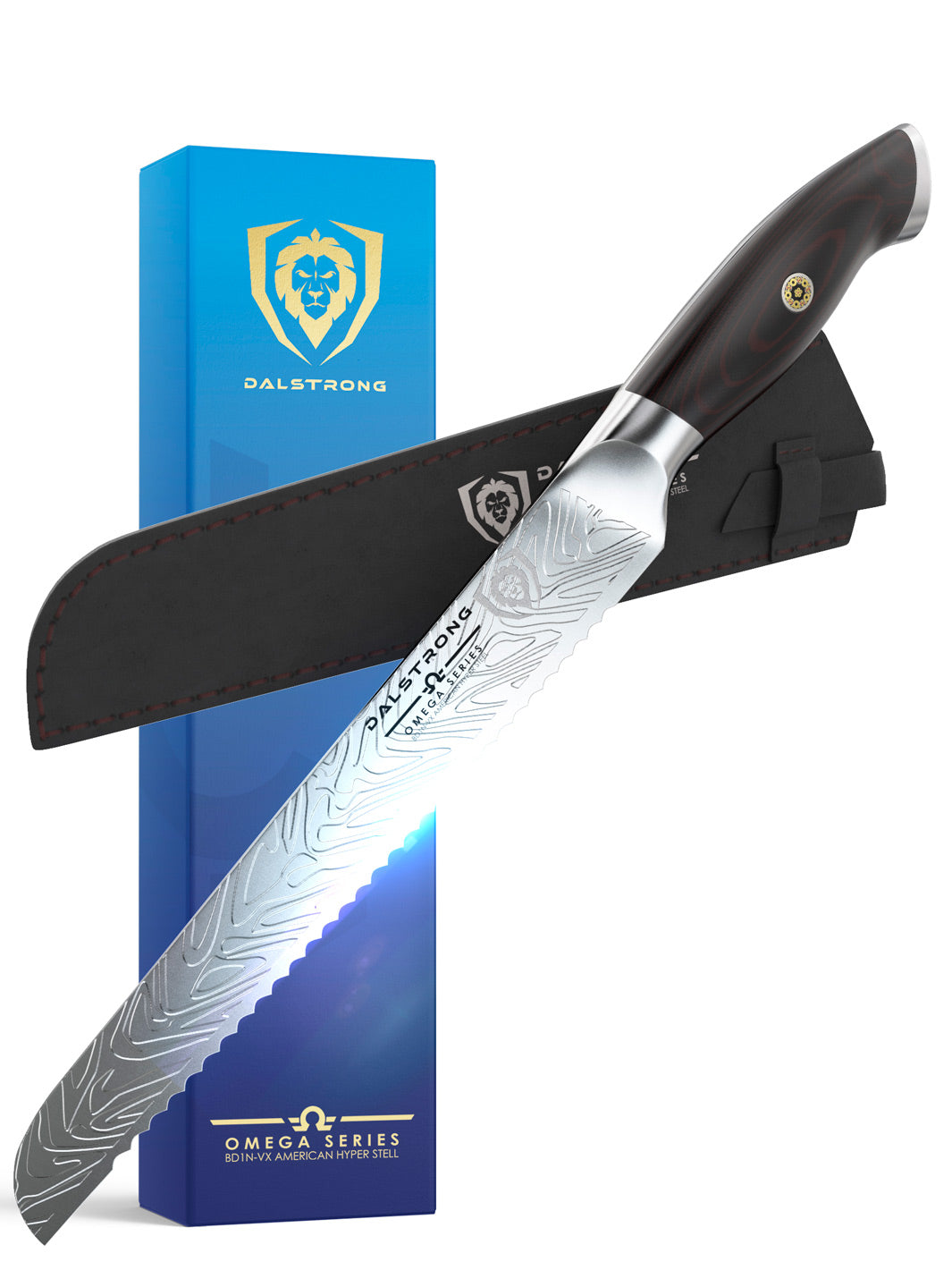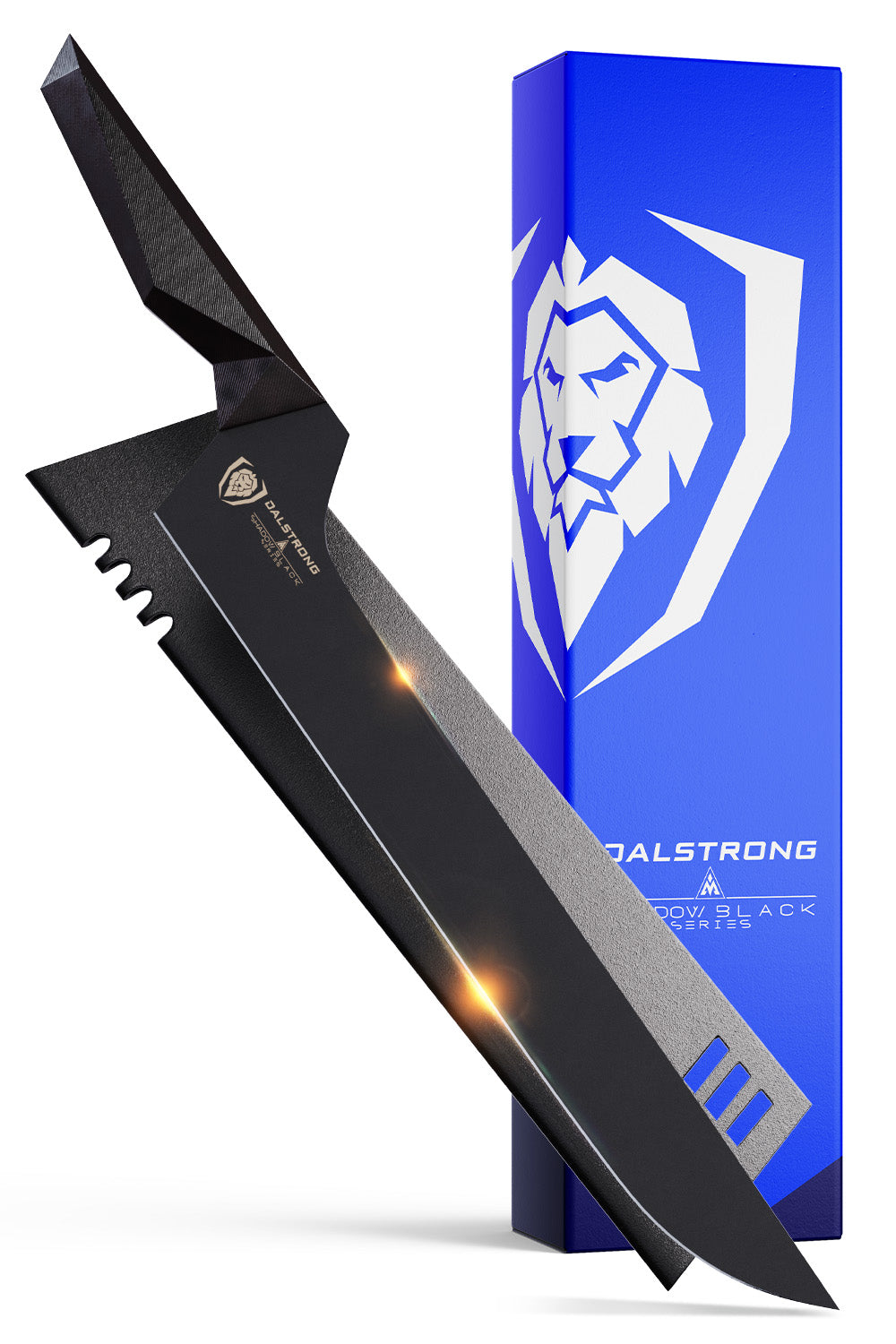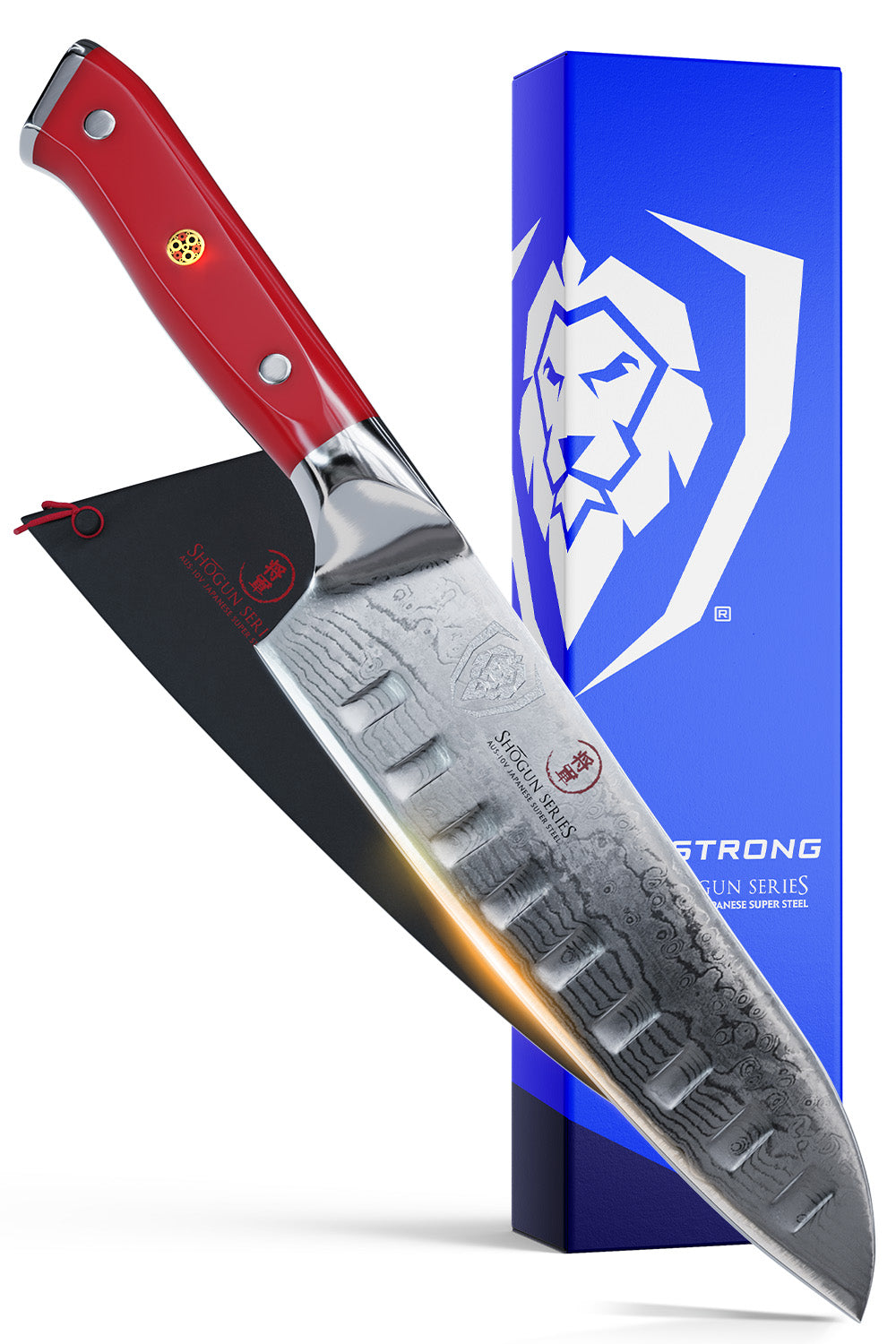 Butcher's Breaking Cimitar Knife 10" | Shogun Series ELITE | Dalstrong
Butcher's Breaking Cimitar Knife 10" | Shogun Series ELITE | Dalstrong
The Most Delicious and Juicy Cuts of Meat
- Chuck
- Rib
- Loin
- Round
- Brisket
- Flank
- Tenderloin
- T-Bone and Porterhouse
- Top Sirloin
- Short Ribs
- Ground Meat
- Flap Steak (Sirloin Tip)
- Skirt Steak
- Tri-Tip
Now, let's dive into the world of juicy meat! Imagine a culinary landscape where every part, chop, and filet promises a delicious adventure. Cuts of meat are like the building blocks of your favorite dishes, each bringing its own flavor, texture, and personality to the table.
Explore the anatomy of taste and learn why well-chosen cuts can transform an ordinary meal into a culinary masterpiece. From the primitive to the secondary, every part has a story, so let's unravel the delicious history of each part of meat.
1. What Are Cuts Of Meat
 Butcher & Breaking Knife 10" | Delta Wolf Series | Dalstrong
Butcher & Breaking Knife 10" | Delta Wolf Series | Dalstrong
Cuts of meat refer to the different sections or portion cuts of an animal's body that are used for cooking. These cuts vary in texture, flavor, and tenderness and are often categorized by the muscle group of the part. For example, you've got your prime cuts like sirloin and ribeye, which are known for their tenderness and rich flavor.
On the other hand, there are tougher cuts like brisket or beef shank, which benefit from slow cooking methods to break down the connective tissues and become more tender. So, whether you're grilling, roast beef, or stewing, the choice of meat cut plays a big role in determining the outcome of your culinary masterpiece!
There are generally two categories of cuts:
Primal cuts
Rib primal cuts beef are the large, basic sections that initially come from the animal, like the loin or the shoulder.
Subprimal cuts
Subprimal cuts of beef are smaller sections obtained by further dividing the primal cuts. For example, a rib primal cut like the loin can be divided into subprimal cuts such as sirloin and beef tenderloin.
The choice of meat cut can greatly influence the cooking process and the final dish. Tender cuts from muscles that don't do much work, like the beef tenderloin, are often best suited for quick cooking methods such as grilling or pan-searing. Tougher cuts from muscles that are more active, like the chuck eye steak or brisket, benefit from slow cooking methods such as braising or stewing to break down collagen and become more tender.
2. What Are The Different Cuts Of Meat
 Bull Nose Butcher & Breaking Knife 8" | Gladiator Series
Bull Nose Butcher & Breaking Knife 8" | Gladiator Series
There are various cut of beef, and they can be categorized into different types based on the specific sections of the animal. Here are some common cuts:
Chuck
This comes from the shoulder area and is often used for pot roasts and ground beef.
Rib
Includes prime beef rib and ribeye types of steaks, known for their rich flavor and tenderness.
Loin
Home to premium cut of beef like tenderloin and sirloin, ideal for grilling or roasting.
Round
Found in the hindquarters, it includes cut of beef like round steak and is often used for lean meat.
Brisket
A tough cut from the breast area that benefits from slow cooking, often used for barbecue.
Flank
A lean cut from the abdominal muscles, great for marinating and grilling.
Tenderloin
Taken from the loin, it's exceptionally tender and often used for filet mignon.
T-Bone and Porterhouse
These include both the tenderloin and strip steak, separated by a T-shaped bone.
Top Sirloin
A flavorful and versatile cut of beef from the sirloin area.
Short Ribs
Cut of beef from the rib area, they are flavorful but may require slow cooking to become tender.
Ground Meat
Usually a mix from various cuts, commonly used for burgers and meatballs.
Flap Steak (Sirloin Tip)
A thin, flavorful cut from the sirloin tip, suitable for grilling or stir-frying.
Skirt Steak
A thin and flavorful cut from the diaphragm, often used in fajitas.
Tri-Tip
A triangular cut from the bottom sirloin, popular for grilling or roasting.
Understanding these cuts helps in choosing the right cooking method to bring out the best flavors and textures from each piece of meat.
3. Meat Cutting Techniques
 Slicing & Carving Knife 12" | Barbarian Series | Dalstrong
Slicing & Carving Knife 12" | Barbarian Series | Dalstrong
Alright, let's talk meat cutting techniques - the art of turning a hunk of meat into those perfect pieces ready for the grill or pot. There are a few classic moves in the world of butchery:
Cubing
Imagine turning a chunk of meat into bite-sized cubes. That's cubing for you. It's handy for kebabs or stews. Just chop it into equal-sized pieces, and you're good to go.
Slicing
Slicing is all about getting those thin, even pieces. Think of deli meats or stir-fry strips. You want a sharp knife and a steady hand for this one.
Dicing
Dicing is like cubing's cousin, but smaller. It's when you cut of beef into tiny, uniform squares. Perfect for things like chili or soups.
Butterflying
Picture opening up a book – that's butterflying. You split the meat horizontally, so it opens up like a butterfly's wings. Great for stuffing or even cooking more evenly.
Trimming
Trimming is like giving your meat a little haircut. You're cutting away excess fat or unwanted bits to get it looking just right.
Deboning
Taking the bones out of meat – that's deboning. It's a bit of a skill, but it's worth it for boneless cuts or when you want to stuff and roll something.
Tenderizing
Sometimes meat needs a little love. Tenderizing involves using a mallet or a special tool to break down the muscle fibers, making it more tender. Good for tougher cuts.
Filleting
This one's for the fish, mainly. Filleting is about getting those boneless fish fillets. It takes some finesse with the knife to follow the bones and get a clean cut.
Remember, each technique has its own time and place, and a sharp knife is your best buddy in the world of meat cutting. Whether you're aiming for steaks, stir-fry, or a hearty stew, mastering these techniques can level up your kitchen game.
Read about the best way to store meat, here.
4. Must-Have Dalstrong Knives For Cutting Meat
1. Chef's Knife 10.25" | Shogun Series ELITE | Dalstrong
The Chef's Knife 10.25" from the Shogun Series ELITE by Dalstrong is a high-quality, visually stunning kitchen tool designed for precision and durability, making it an excellent choice for serious home cooks and professional chefs alike.
PROS:
- This chef's knife boasts top-notch craftsmanship, with a keen focus on accuracy and class.
- The 10.25-inch blade, made from 66-layers of high-carbon stainless steel, secures extraordinary durability and edge retention.
- The knife features an beautiful Tsunami Rose Damascus pattern, merging form and function with a remarkable visual appeal.
- The G10 handle gives a secure grip, boosting ease of use and lessen hand fatigue during prolonged use.
- Perfect for a wide range of kitchen duties, from dicing and slicing to chopping, making it a flexible tool for chefs of all levels.
CONS:
- This knife may feel a bit heavy or unwieldy for individuals who prefer lighter knives or have smaller hands.
2. Butcher & Breaking Knife 8" | Shogun Series ELITE | Dalstrong
The Butcher & Breaking Knife 8" from the Shogun Series ELITE by Dalstrong is a powerful tool that excels in precision butchering, offering a blend of durability, functionality, and aesthetics.
PROS:
- This knife excels in precision butchering and breaking down larger cut of beef, making it an essential tool for both professional chefs and home cooks.
- Crafted from AUS-10V Japanese super steel core, the 8-inch blade offers outstanding durability, corrosion resistance, and edge retention.
- The knife features a tapered design for minimal slicing resistance and increased efficiency when tackling various meats.
CONS:
- Due to its designed purpose for breaking down meat, this knife may not be the go-to choice for tasks that require fine precision or detailed cutting.
3. Straight-Edged Boning Knife 6" | Phantom Series | Dalstrong
The Straight-Edged Boning Knife 6" from the Phantom Series by Dalstrong is a specialized tool crafted to debone with efficiency and offering a combination of sharpness, control, and style.
PROS:
- This knife is expertly crafted for precision boning tasks, making it an indispensable tool for deboning meats, poultry, and fish.
- The 6-inch blade is forged from premium Japanese AUS-8 at 58 HRC, ensuring excellent sharpness, durability, and quality.
- The narrow, straight-edged blade allows for precise maneuvering around bones, joints, and delicate cuts, providing optimal control.
- The ergonomic handle, made from black Spanish pakkawood, offers a comfortable and secure grip during intricate boning tasks.
- The knife features a sleek and modern design, enhancing both functionality and aesthetics in the kitchen.
CONS:
- While suitable for precision tasks, the 6-inch size may feel limiting for those who prefer longer blades for certain cutting activities.
4. Fillet Knife 6" | Delta Wolf Series | Dalstrong
The Fillet Knife 6" from the Delta Wolf Series by Dalstrong is a specialized tool crafted for precise filleting, offering a combination of sharpness, class, and flexibility.
PROS:
- Tailored for precision filleting tasks, this knife is adept at smoothly separating fillets from fish or other meats.
- The 6-inch blade is crafted from high-carbon 9CR18MOV steel at 60° Rockwell Hardness, ensuring exceptional sharpness and long-lasting durability.
- The knife features a flexible blade, allowing it to follow the contours of fish bones and deliver clean, seamless fillets.
CONS:
- Due to its flexible and precise nature, this fillet knife may not be the best choice for heavier cutting or tasks involving bones.
5. Carving Knife & Fork Set 9" | Shogun Series ELITE | Dalstrong
The Carving Knife & Fork Set 9" from the Shogun Series ELITE by Dalstrong offers a combination of precision carving and visual elegance.
PROS:
- Crafted for precision carving, this set is designed to make slicing through roasts, poultry, and other meats a breeze.
- The 9-inch carving knife features a blade made from ultra-premium Japanese AUS-10V ‘super steel’, offering unparalleled sharpness, quality performance, and premium standard.
- The knife's tapered design minimizes drag, allowing for clean and effortless slices, while the fork assists in holding meats securely during carving.
- Features a Tsunami Rose Damascus pattern, the set combines high-performance functionality with a visually stunning aesthetic.
CONS:
- Users with preferences for smaller knives may find it less optimal for certain tasks.
5. Frequently Asked Questions
What are the different cuts of meats?
In the world of beef, various cuts offer unique flavors and textures. The top round, a lean cut from the hindquarters, is ideal for roasting. Meanwhile, the bottom round, slightly tougher, benefits from slow cooking methods. If you're craving a juicy steak, the short loin is where it's at, providing premium cuts like T-bone and sirloin for a delectable dining experience.
What are the 10 different beef cuts?
Beef offers a diverse array of cuts, each with distinct qualities. Among the top picks are the tenderloin, sirloin, and T-bone from the short loin, known for their premium tenderness. The top round, a lean cut, is perfect for roasting, while the bottom round, a bit tougher, excels in slow-cooked dishes. These tenacious ten cuts cater to various culinary preferences and cooking methods.
What are the 10 types of meat?
From succulent filet mignon and flavorful short ribs to the robust top sirloin and versatile round steaks, beef offers a rich variety of cuts. For slow-cooked goodness, pot roasting is a classic choice, while the marbled perfection of a ribeye steak satisfies the carnivorous cravings. These ten types of meat showcase the delicious diversity beef brings to the culinary table.
What is the meaning of cut of meat?
A "cut of meat" refers to a specific portion from an animal's carcass, particularly in the context of beef. Understanding the basics of beef cuts involves recognizing various sections like the round primal, which yields cuts such as top round steak, eye roast, and tritip steak. Examples like petite tender, strip loin, brisket flat, and beef brisket illustrate the diverse options available for cooking and dining preferences.














